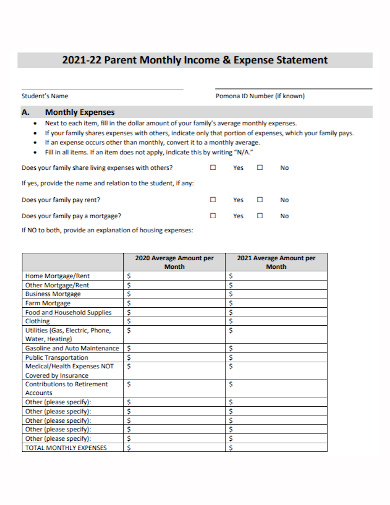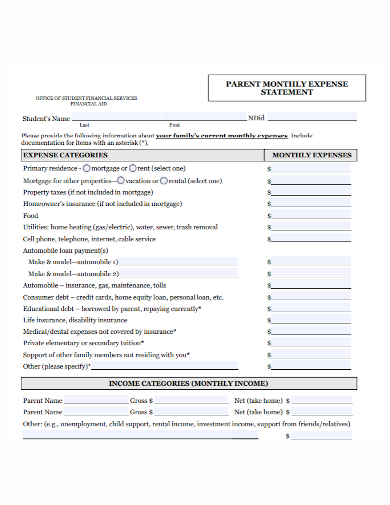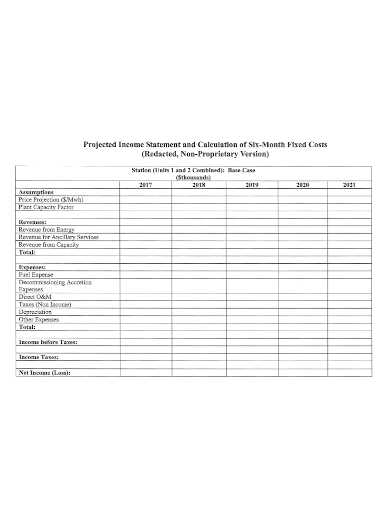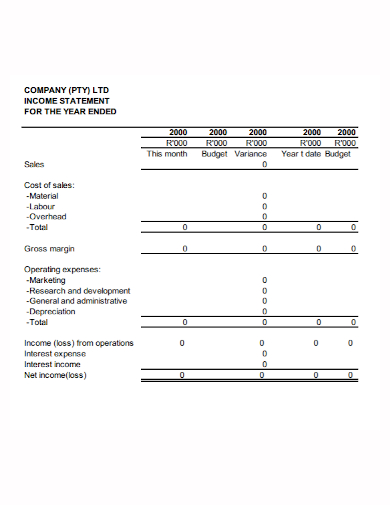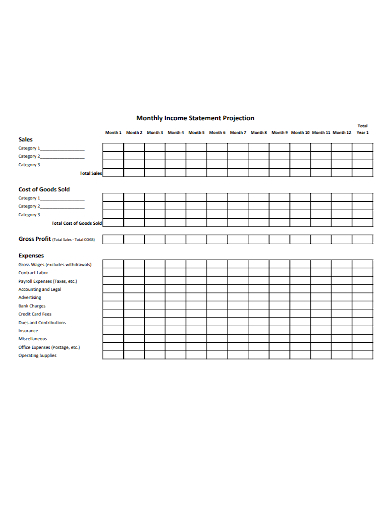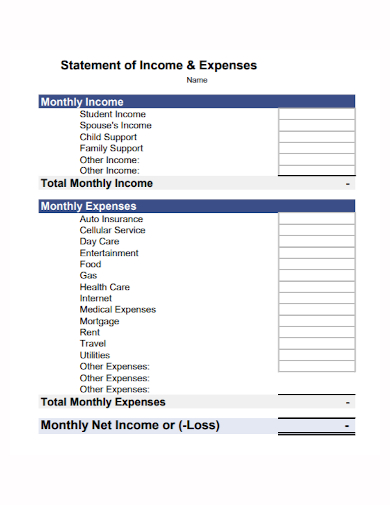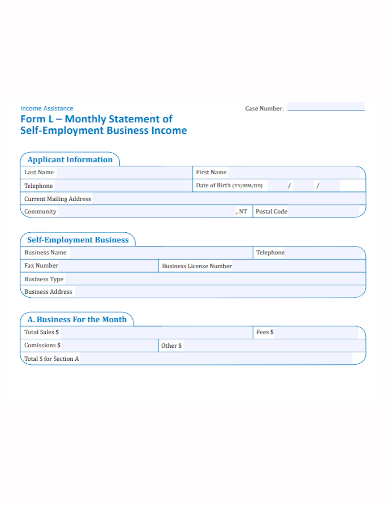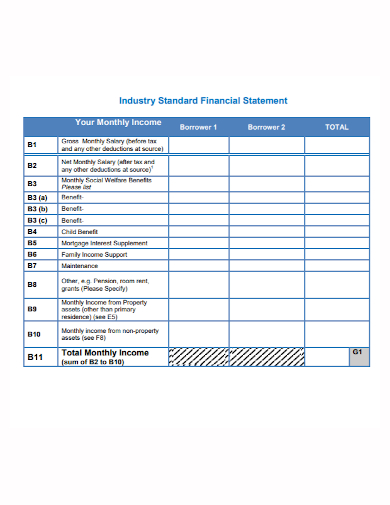As a business owner or entrepreneur, you must understand your income statement. This important document not only assists you in determining the health of your company, but also identifies potential risks, opportunities, and issues that must be addressed. It’s a document that, when read and analyzed, can help you better understand your company’s strategy, set more precise milestones, and set more accurate goals for yourself and your team. Trying to understand how to read and analyze your income statement, like any financial statement, can be a difficult task. It can become a fruitful and simple exercise if you take the time to learn how, set up a consistent review process, and equip yourself with the right tools.
10+ Income Statement Monthly Samples
Your income statement, also known as your profit and loss statement (P&L), encapsulates your company’s revenue and operating expenses over time. This is the most popular and widely used financial statement in any business plan, and it assists you in calculating your net income for the same time period. Your income statement’s most basic purpose is to tell you whether or not your company is profitable. Your statement may be fairly simple based on the complexity and size of your business. It can become more complicated as your company grows and you add more expenditures, revenue streams, and other line items.
1. Income Statement Monthly Template
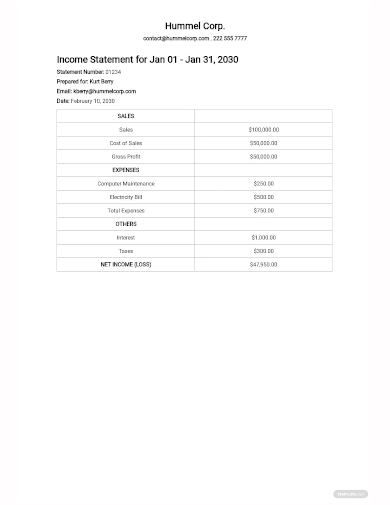
2. Parent Monthly Income and Expense Statement
3. Student Monthly Income and Expense Statement
4. Monthly Project Income Statement
5. Company Monthly Income Statement
6. Monthly Sales Income Statement
7. Monthly Personal Income Statement
8. Monthly Profit and Loss Income Statement
9. Monthly Income and Expense Statement
10. Monthly Business Income Statement
11. Monthly Income Financial Statement
Purpose of Monthly Income Statement
An income statement is used to show your financial performance over a specific time period. It’s a snapshot of your current business performance that can help you define what happened in a given day, week, month, or year.
Comparing your income statement to other financial documents is now the true benefit of reviewing it. Looking at your statement of cash flows and balance sheet, for example, can help you figure out if your company is truly profitable if you’re overspending, and if you have enough cash to invest.
You should also use your income statement to determine whether you’re performing better, worse, or as expected. This is accomplished through a review process known as plan vs actuals comparison, which compares it to your sales and expense forecasts. The projections are then updated to reflect actual performance, giving you a clearer picture of how your business will fare in the future.
In other words, you use your income statement to fuel a more thorough examination of your company’s financial position. It assists you in identifying any high-level issues or opportunities, which you can then investigate further using forecast scenarios and other financial documentation.
Revenue, expenses, gains, and losses are the four main items on the income statement. It makes no distinction between cash and non-cash receipts (cash sales vs. credit sales) or cash vs. non-cash payments/disbursements (purchases in cash versus purchases on credit). It begins with sales data, then works its way down to calculate net income and, finally, earnings per share (EPS). It essentially explains how the company’s net revenue is transformed into net earnings (profit or loss).
FAQs
What do you mean by gains?
Gains, also known as other income, are the net proceeds from other activities such as the sale of long-term assets. Net income from one-time non-business activities, such as a company selling an old transportation van, unused land, or a subsidiary company, is included in this category.
What is operating revenue?
Operating revenue is a term used to describe revenue generated by primary activities. The revenue from primary activities refers to revenue generated from the sale of a product by a company that manufactures it, or by a wholesaler, distributor, or retailer who is in the business of selling it. Similarly, revenue from primary activities refers to the profits or fees earned in exchange for providing those services by a company (or its franchisees) in the service business.
An income statement can reveal a lot of information about a company’s operations. It includes a company’s operations, management efficiency, potential profit-eroding leaky areas, and whether the company is performing in line with industry peers.
Related Posts
FREE 6+ Research Contribution Statement Samples in PDF | DOC
FREE 10+ Marketing Problem Statement Samples [ Strategy, Digital, Social Media ]
FREE 10+ Medical Problem Statement Samples [ Surgical, Nursing, Management ]
FREE 10+ Payoff Statement Samples in PDF | DOC
FREE 10+ Scholarship Statement of Purpose Samples in PDF | DOC
FREE 10+ Engineering Problem Statement Samples [ Software, Mechanical, Civil ]
FREE 30+ Information Statement Samples in PDF | MS Word
FREE 50+ Policy Statement Samples in MS Word | Google Docs | PDF
FREE 50+ Summary Statement Samples in PDF | MS Word
FREE 10+ Nursing School Personal Statement in PDF
FREE 9+ Mortgage Statement Samples and Templates in PDF
FREE 10+ Trust Distribution Statement Samples in PDF
FREE 14+ Compliance Statement Samples & Templates in PDF | MS Word
FREE 10+ Extension Impact Statement Samples in PDF | DOC
FREE 10+ Bank Reconciliation Statement Samples and Templates in PDF | MS Word

